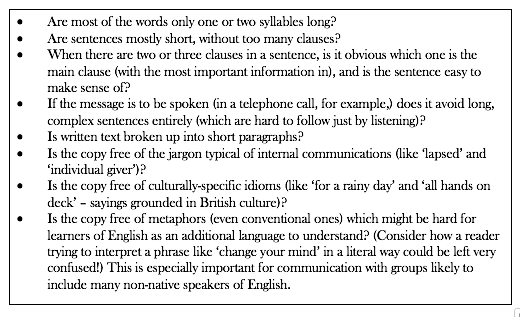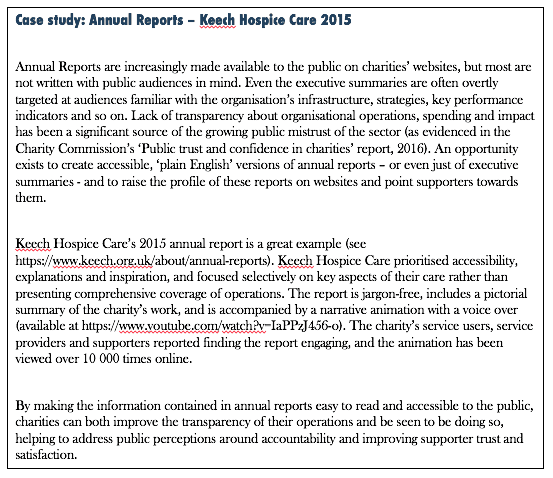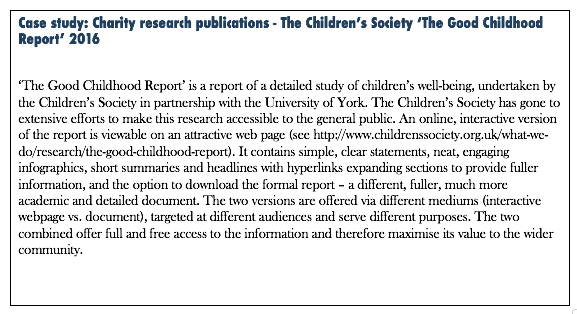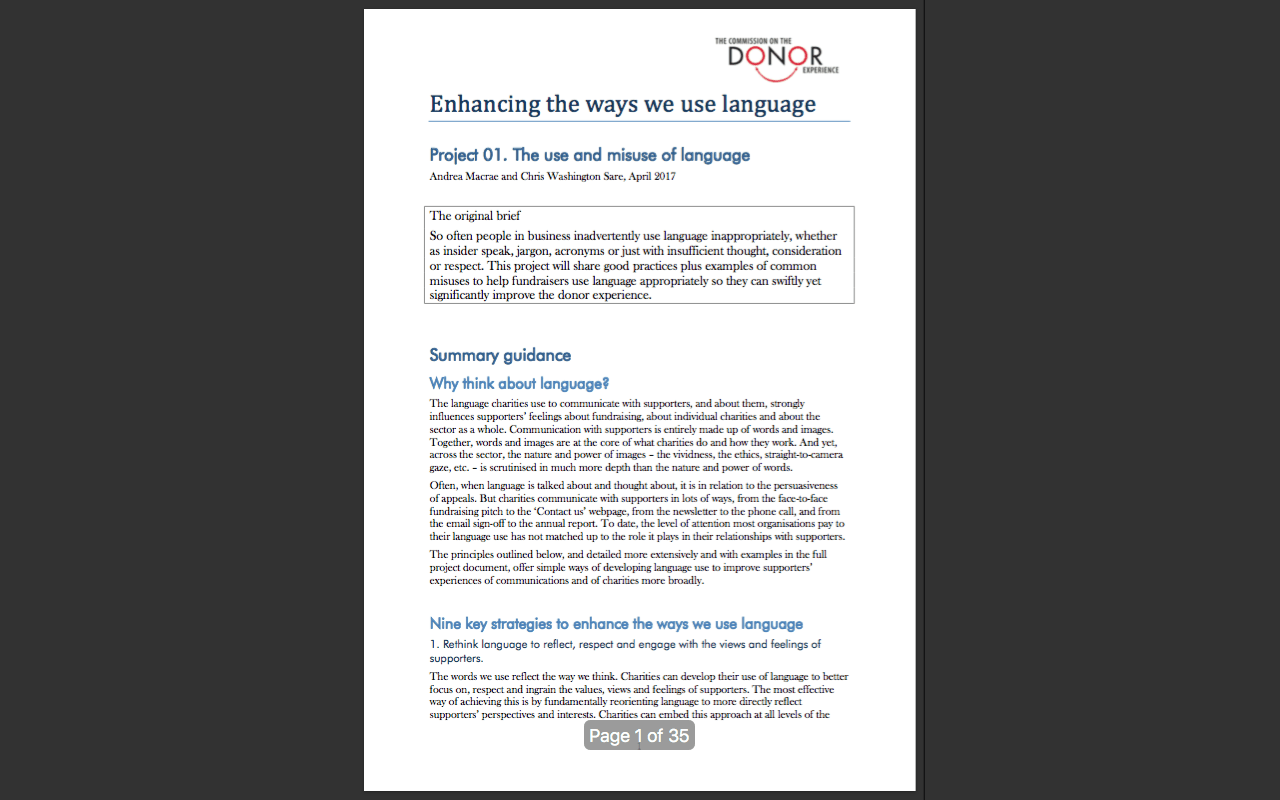CDE project 1 section 6: use inclusive, accessible language and avoid jargon.
- Written by
- The Commission on the Donor Experience
- Added
- April 26, 2017
Enhancing the ways we use language
Andrea Macrae and Chris Washington Sare, April 2017
Reviewed by Matthew Sherrington
6. Use inclusive, accessible language and avoid jargon.
As the National Literacy Trust explains, “around 16 per cent, or 5.1 million adults in England, can be described as ‘functionally illiterate’. They would not pass an English GCSE and have literacy levels at or below those expected of an 11-year-old."[1]
To engage and appeal to as many people as possible, communications need to be accessible to the widest possible range of people. To achieve this, communications needs to be pitched at an appropriate level for the audience and channel. In written communication with trustees, corporate partners and philanthropists, formal, sophisticated expression is the norm. Even in these contexts, though, complex expression is often actually unnecessary, and unhelpful. And in the context of mass messaging, complexity is catastrophic. A significant proportion of the British public have low literacy levels, are not native English speakers, or are dyslexic. Literacy levels aside, most people don’t have the time, attention or will to read dense language.
When communicating with wide audiences, the writing needs to be simple. Check your copy against a few key questions:

Take care not to automatically drift into a more complex and formal style when developing copy for what we might feel are more formal topics, such as information about use of personal data, or information about how to make a complaint and how it will be addressed. Likewise, even if the primary readership of a document is not supporters or the general public (as in the case of Trustee reports), if the document is made available to supporters, consider either providing an accessible summary version, or avoiding the conventional formal and complex style of these documents when writing the original, to ensure it is accessible to a wide audience.

Many guide books offer great advice on writing charity communications copy (for example, George Smith’s Tiny Essentials of Writing for Fundraising). There are also some simple ways to test the relative ‘readability’ of communications copy. The Flesch Readability Formula [2] which measures reading ease using a basic 100 point scale, is widely popular and used in lots of word processing programmes. According to Flesch, mass communications should aim for a score of between 60 and 100. The scoring is based on a formula measuring average word length (in syllables) and sentence length (in words). Something written in ‘plain English’ (scoring 60-70, easy for 13-15 year olds to understand) has an average sentence length of fewer than 20 words, with most words just one or two syllables long. A really good, free online test tool, measuring readability according to a range of different fomulas, is available at http://www.webpagefx.com/tools...[3] While these formulas are not flawless, they can be good indicators. They work best alongside the more ‘human’ method of simply asking for feedback from people of different ages and cultural backgrounds.
[1] National Literacy Trust, Adult Literacy, http://www.literacytrust.org.u...
[2] Rudolph Flesch’s readability formula is described at http://www.readabilityformulas...
[3] WebpageFX, Readability Test Tool, http://www.webpagefx.com/tools...






















